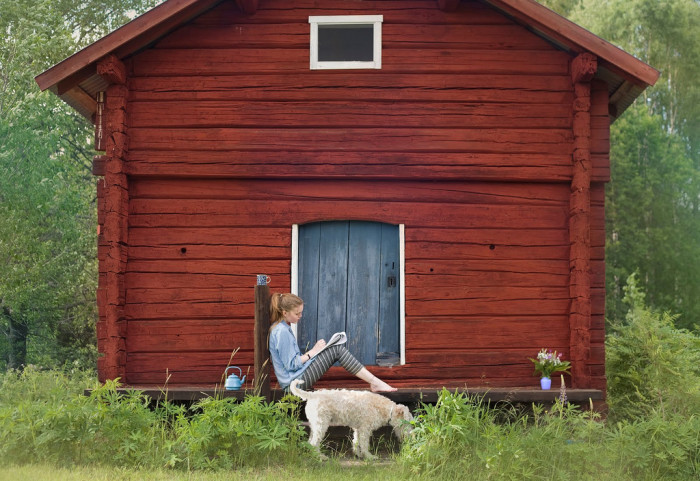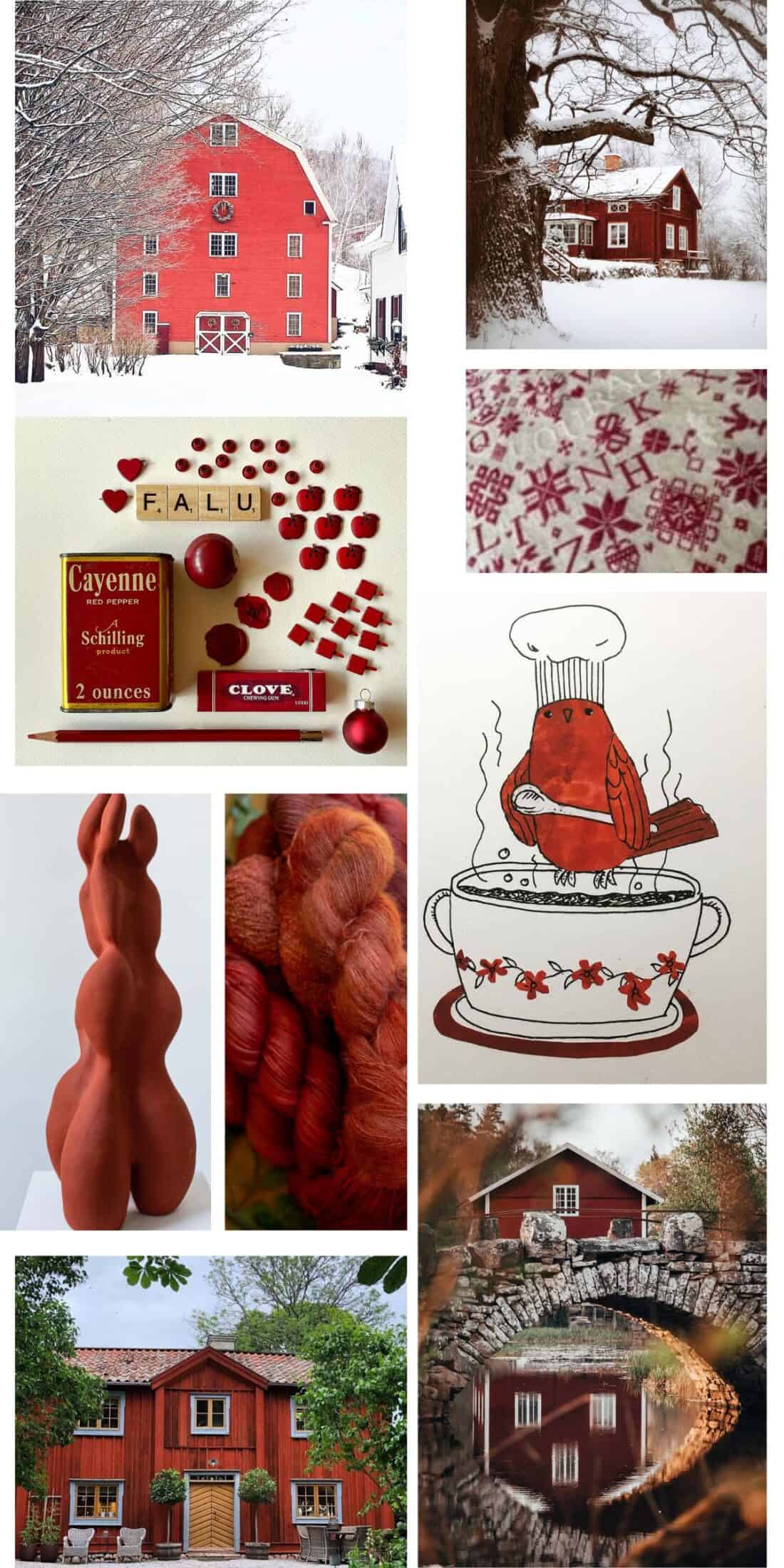Falu red paint (Falu Rödfärg) is a quintessential symbol of Swedish heritage and design. It’s not just a color—it’s a piece of history, a cultural touchstone, and a practical marvel that has stood the test of time. Here’s an in-depth look at this iconic paint, from its origins to its enduring charm.

The Origins and History of Falu Red
Falu red paint originates from the Falun copper mine (Falu Gruva) in central Sweden, a UNESCO World Heritage Site. During the mine’s peak in the 17th century, it was one of Europe’s largest copper producers. The paint is made from a byproduct of copper mining: iron-rich slag. When mixed with water, linseed oil, and rye flour, it forms a durable, protective paint.
Falu red gained popularity in the 16th century when Swedish nobility began painting their homes with it to emulate the red brick facades of European manor houses.
The deep, earthy red has become synonymous with Swedish countryside cottages and barns. Its warm hue contrasts beautifully with the verdant landscapes and snowy winters.
Today, Falu red is as Swedish as ABBA or meatballs, with many Swedes choosing it for its nostalgic and traditional appeal.
It aligns with Swedish values of eco-friendliness and resourcefulness, as it uses natural materials and waste products.
Falu Red Composition and Properties – A Sustainable Paint Choice
The paint contains a unique formula of silica, iron ochre, and zinc, which give it its rich color and protective qualities. The weather-resistant Falu red paint protects wood from weathering, mold, and rot, making it especially useful in Sweden’s cold, damp climate. But its porous nature allows wood to breathe, preventing moisture buildup and extending the life of wooden structures.
Falu red paint is still produced using traditional methods, and you can even buy kits to make your own at home.
While “Falu red” is known for its deep red tone, subtle variations exist—from lighter, brick-like shades to darker, almost burgundy hues. Though synonymous with Sweden, Falu red has inspired imitators worldwide. Similar earthy red tones can be seen in farmhouses across Europe and North America.
How to Use Falue Red in Your Landscapes
Cottages and Barns: The most iconic use of Falu red is on wooden cottages and barns across rural Sweden.
Modern Applications: Increasingly, architects and designers are using Falu red in contemporary builds to give homes a rustic-meets-modern aesthetic.
Fences and Outbuildings: Many Swedes extend the red paint to fences, sheds, and even garden furniture for a cohesive look.
Properly applied Falu red paint can last up to 20 years, requiring minimal maintenance.

Falu Rödfärg is not just a paint, it’s a way of life
-Anders Lundgren, a craftsman who has worked with the paint for over 30 years
Falu red paint is more than just a pretty facade. It’s a functional, historical, and cultural artifact that connects Sweden’s industrial past with its modern commitment to sustainability and design. Whether you’re painting a traditional farmhouse or adding a touch of Scandinavian charm to your shed, Falu red is a timeless choice that carries the essence of Swedish craftsmanship.

TL;DR – Falu Red
Did you know wooden buildings often aren’t arbitrarily red?
Falu red (pronounced “FAH-loo”, in Swedish, it’s Falu rödfärg) is the name of a Swedish, deep red paint used for preservation on wooden cottages and barns. The paint originated from the copper mine at Falun in Dalarna, Sweden, and consists of water, rye flour, linseed oil, and tailings from the copper mines of Falun, which contain silicates, iron oxides, copper compounds, and zinc. Similarly, in Finland, Falu red is known as punamulta (“red earth”), and the color in both countries has strong ties to the countryside and the notion of an idyllic nuclear family (often with a potato patch).
Falu, who knew?
apparently there is a green color that is generated and used in the same way and for the same reasons (I saw it in Sweden abt 8 years ago) — it was such a great color for their light, I continue to wish for find the same perfect green for my own barn color…
I’m guessing it’s a nicer green then our copper chromium arsenic pressure treated wood;)
😉 yes — it was.